
Fiesta Markings Fiesta ware dishes, Fiesta, Fiestaware
Here are a few of the essential Fiestaware books that I recommend: • Homer Laughlin China: Guide to Shapes and Patterns by Jo Cunningham and Darlene Nossaman • Homer Laughlin: Decades of Dinnerware by Bob Page, Dean Frederiksen and Dean Six • Warman"s Fiesta: Identification and Price Guide by Glen Victorey These resources should be.

Fiesta colors, years of production chart Fiestaware, Fiesta
Identifying Fiesta Markings by Year. You may be able to tell if Fiestaware dishes are vintage by looking at the markings on the bottom of the china piece. Fiestaware collectors consider pieces made between 1936 and 1972 as vintage. If the label on the Fiestaware has the word "fiesta" in lowercase letters, it is probably vintage.

Vintage Fiestaware Markings Job Porn
Warman's Fiesta: Identification and Price Guide. Paperback - January 1, 2007. This book empowers you to thoroughly enjoy and find greater success in collecting Fiesta dinnerware. Highly collectible and revolutionary for its time, Fiesta continues its reign as the ware that "turns your table into celebration" by appealing to fans of both art.

How to Recognize Vintage Fiestaware Identifying Marks Fiestaware
Vintage Fiesta Pottery Online Price Guide. When establishing value, condition is everything for this atomic age dinnerware. These prices are assuming excellent condition with no chips or cracks or repairs and little wear with only moderate factory flaws. Discount 20-40% for major factory flaws or minor use, discount 50%-90% for pottery that is.

Fiesta® Date Code Guide Fiesta Dinnerware, Always Festive Fiesta
Please note that turquoise, yellow, cobalt blue, and rose Fiestaware pieces have been produced again since 1986, so look at the markings on the bottom to determine if your Fiesta is the original vintage run of those colors from the 1930s-1970s, or if it's a modern post-1986 production.
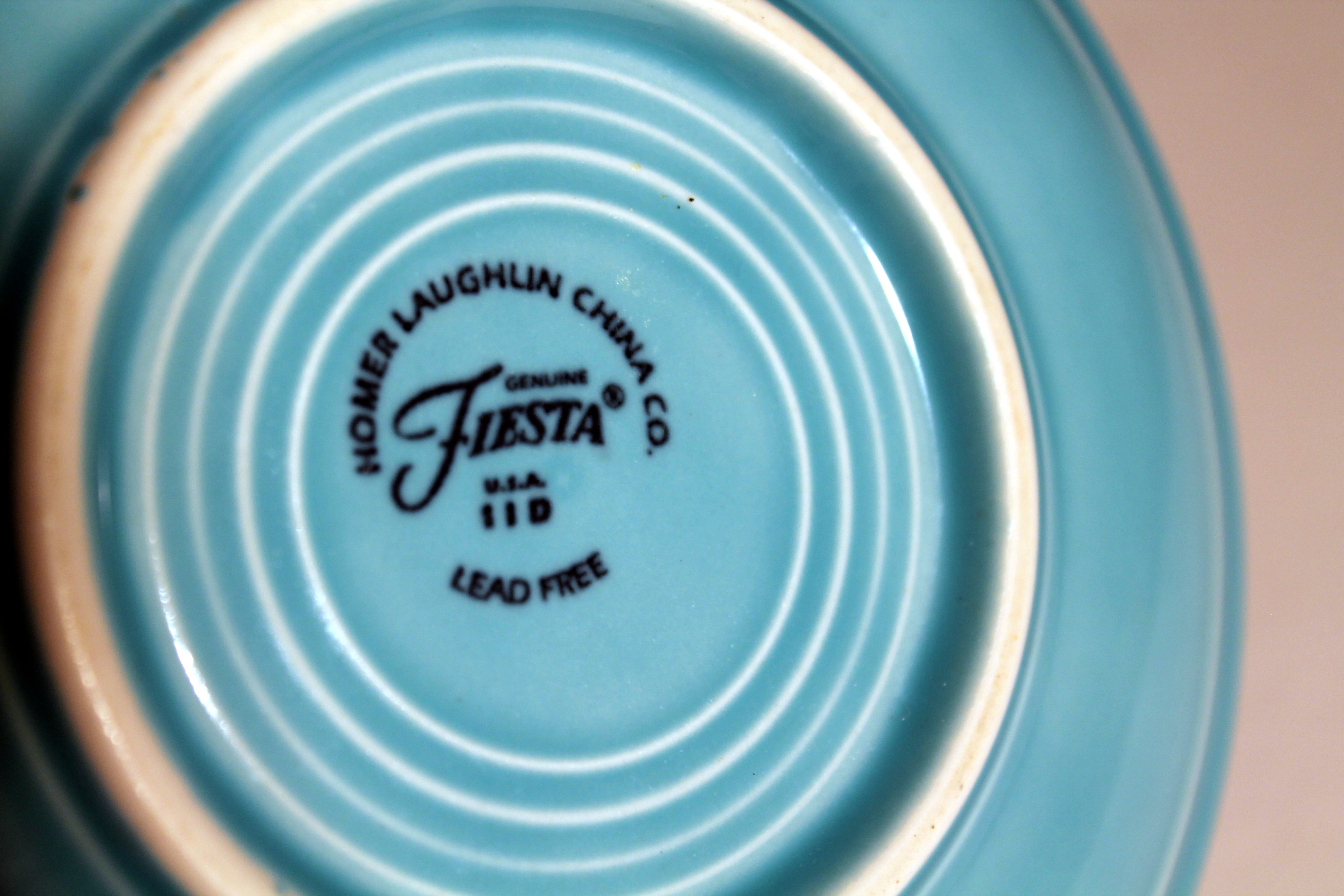
The Complete Guide to Fiesta Ceramics Estate Sale Blog
Fiesta backstamps are the ink markings that appear on the bottom of the plate. These Fiesta markings all feature the word "Fiesta" in some form as well as some marking identifying Homer Laughlin dating the manufacturer. Remember fiesta rules:. Today, there are four possibly more vintage Fiesta markings.

Fiesta® Dinnerware Colors 1936 1972 Fiesta colors, Fiestaware
The color of the dinnerware is an indicator used to date Fiesta pieces since certain hues were produced for very limited periods. These early colors are usually broken down into the original colors of cobalt blue, light green, ivory, red, yellow, and turquoise (added to the line in 1937). Then there are the 1950s colors of chartreuse, forest.

24 best images about Antique & Vintage Makers Marks on Pinterest
The original colors (red, cobalt blue, light green, yellow, and ivory) are the most sought after but all colors of Fiestaware are popular. Medium Green, made from 1959-1969, is the rarest and most hunted color. A piece of Fiesta in that shade is very difficult to find. The original red color, made from 1936-1943, is also incredibly rare.
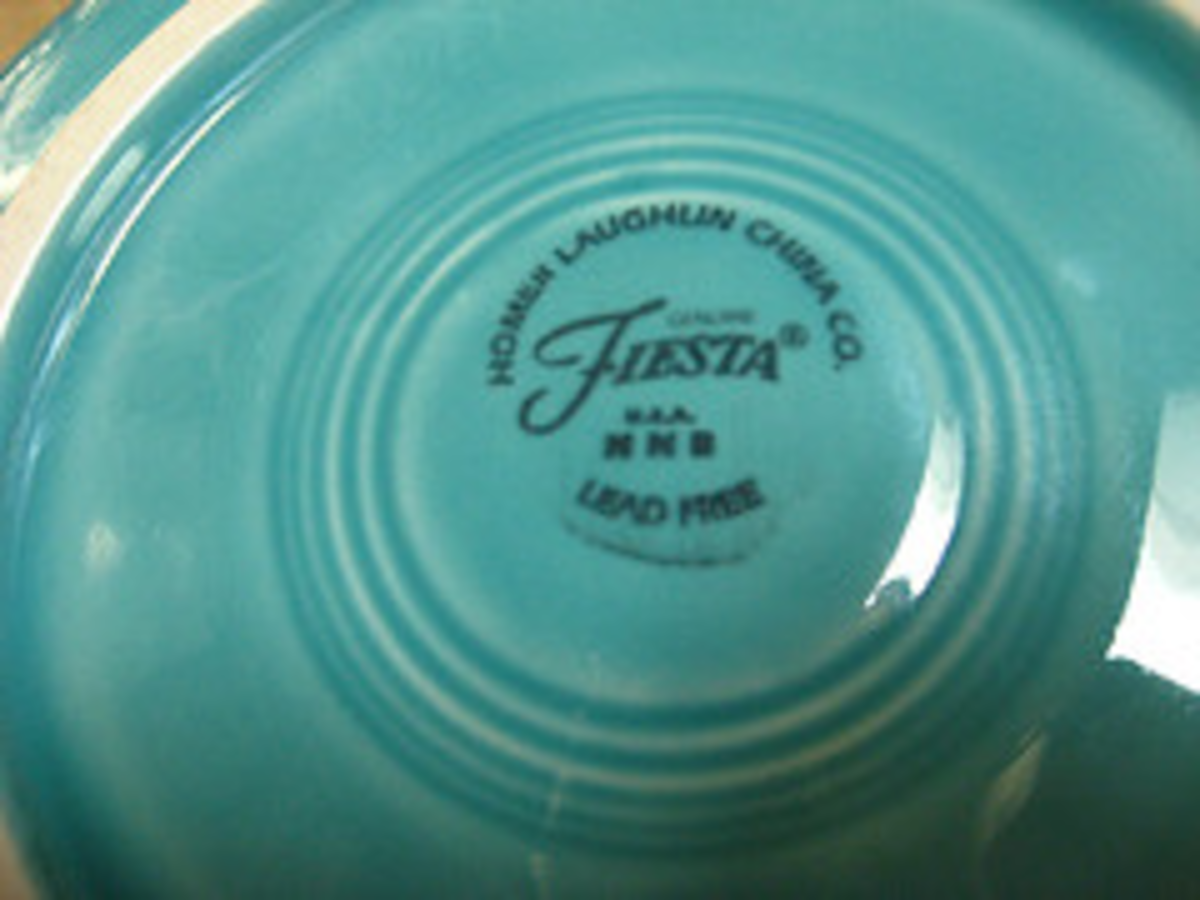
Fiestaware China by Homer Laughlin China HobbyLark
See all colors of Fiesta Dinnerware: https://evkitch.com/2MrR5UYIs your Fiestaware genuine? In this video, we'll check out differing back-stamps and also see.

How to Identify Vintage Fiestaware through Markings Fiestaware
The Fiesta Tableware Company, an American dinnerware and ceramics manufacturer, is the rebranded version of the Homer Laughlin China Company. The business is responsible for continuing the production and sale of Homer Laughlin's multicolored, glazed Art Deco-designed tableware known as Fiesta. Despite its twelve-year hiatus in the 1970s and.

Fiesta® Dinnerware Backstamps, Backstamps Dinnerware Fiesta,Fiesta
NEW FIESTA MARKINGS. "Fiesta" in upper case. Two other new Fiesta backstamps. "H" MARKINGS: if a cast indented mark has a little "H" at the bottom, then it is NEW. The "H" mark is something that HLC recently started in the past couple of years. As a result, there have been many new pieces made which do not have this special mark.
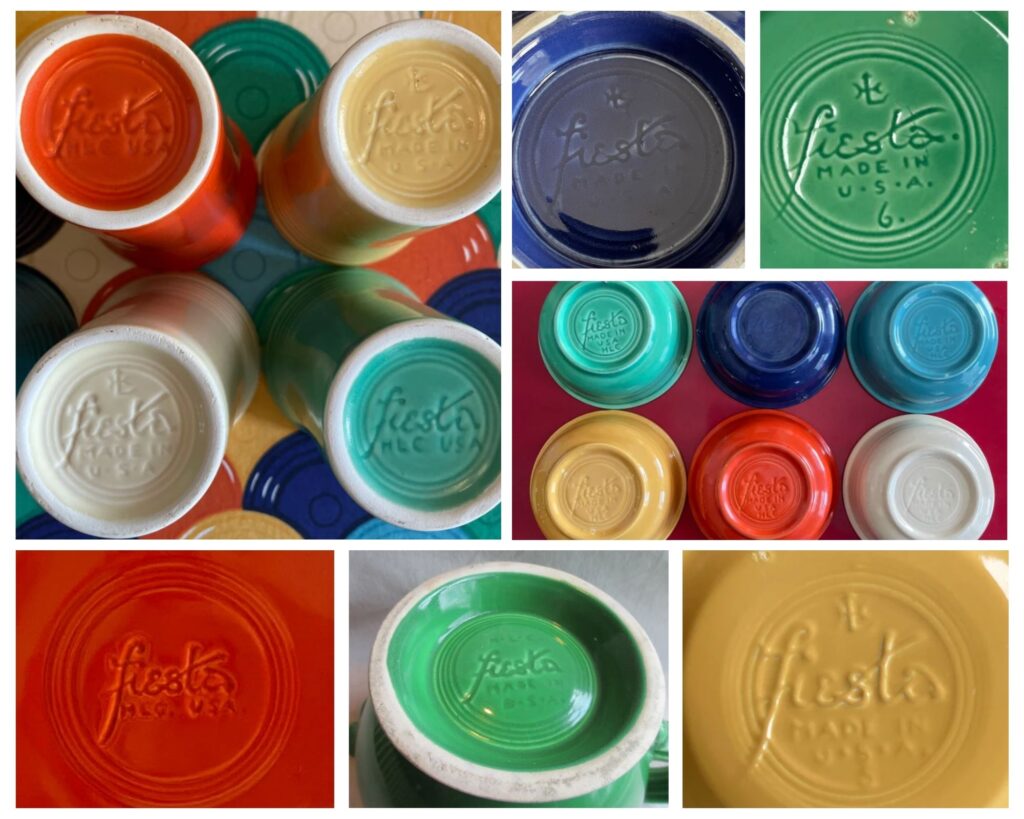
How Old is my Fiestaware? Fiesta Identification Guide Antique Answers
Vintage Fiestaware includes all Fiesta items that were produced between 1936 and 1972. Collectors can identify older vintage Fiestaware by its labeling, which includes "fiesta" in lowercase letters. Modern Fiestaware includes Fiesta items made since 1986. Though there are a few exceptions, modern Fiestaware has "FIESTA" capitalized, and.
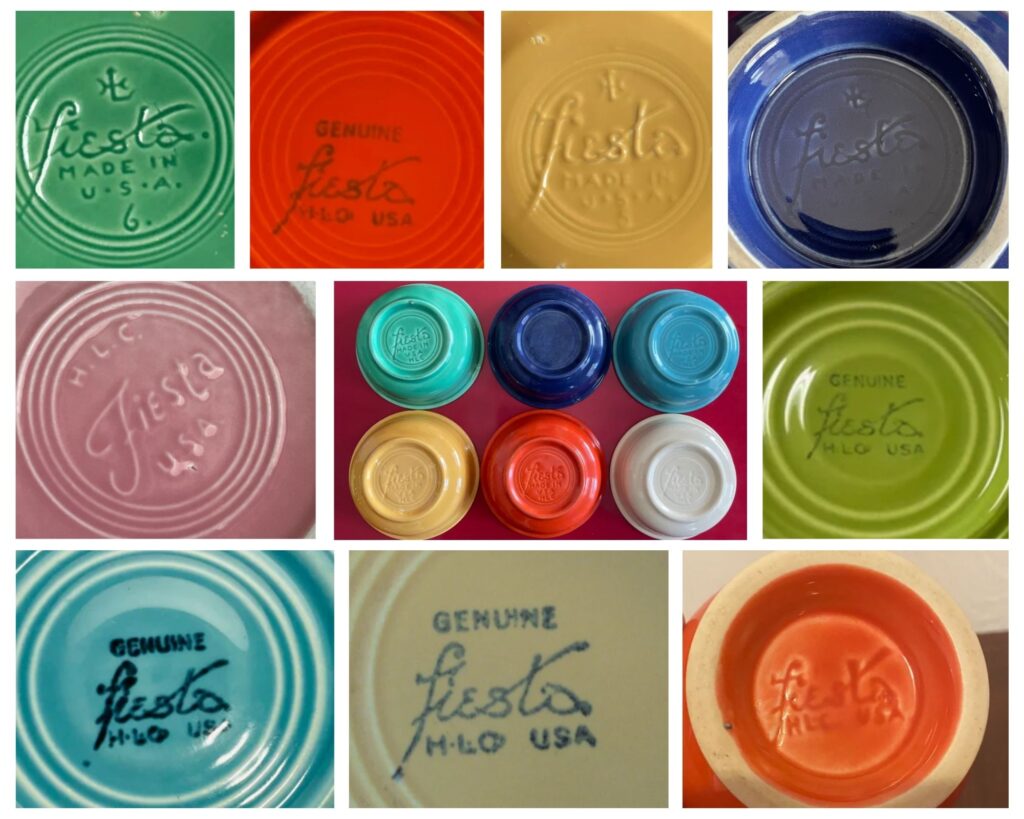
How Old is my Fiestaware? Fiesta Identification Guide Antique Answers
See all colors of Fiesta Dinnerware: https://evkitch.com/2MrR5UYDo you think your Fiesta is unmarked? Need to find the Fiesta logo? We go through how to find.
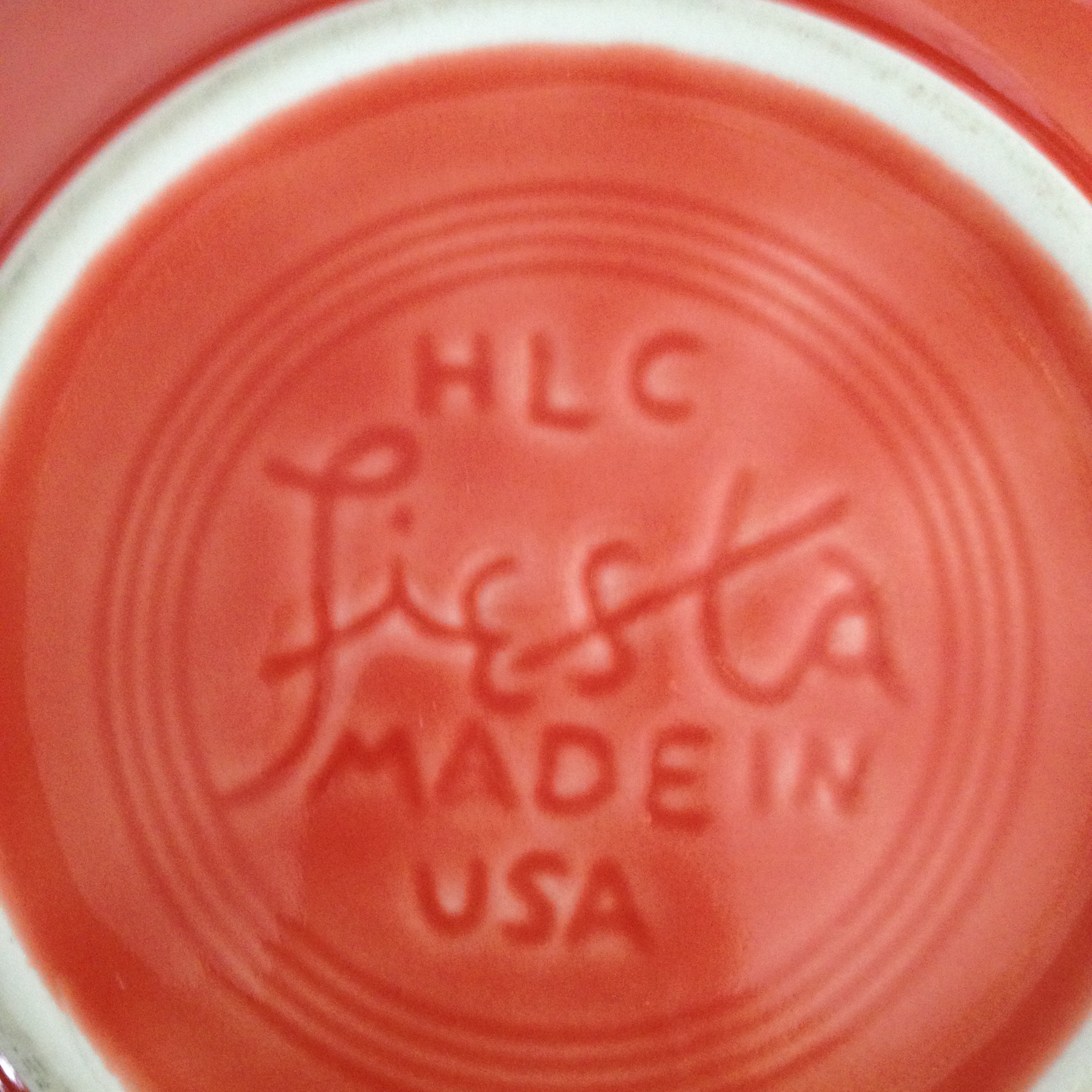
Confused about Fiestaware Color The eBay Community
The first place to look in order to verify whether an item is genuine is to flip it over and look on the underside. Most fine china is backstamped with the manufacturer's logo. The original Fiesta design and name were filed by Homer Laughlin China Company on March 20, 1937 (Patent No. 390-298). To the right are the four most common backstamps.

wm
In addition to the piece being completely covered, you'll see three pin marks - these small indentations are a result of the glazing process. New Fiestaware will have a dry foot ring. Flip over your find! Sizing is another good way to tell vintage from modern apart. New plates are solid dimensions, like 15" or 6".
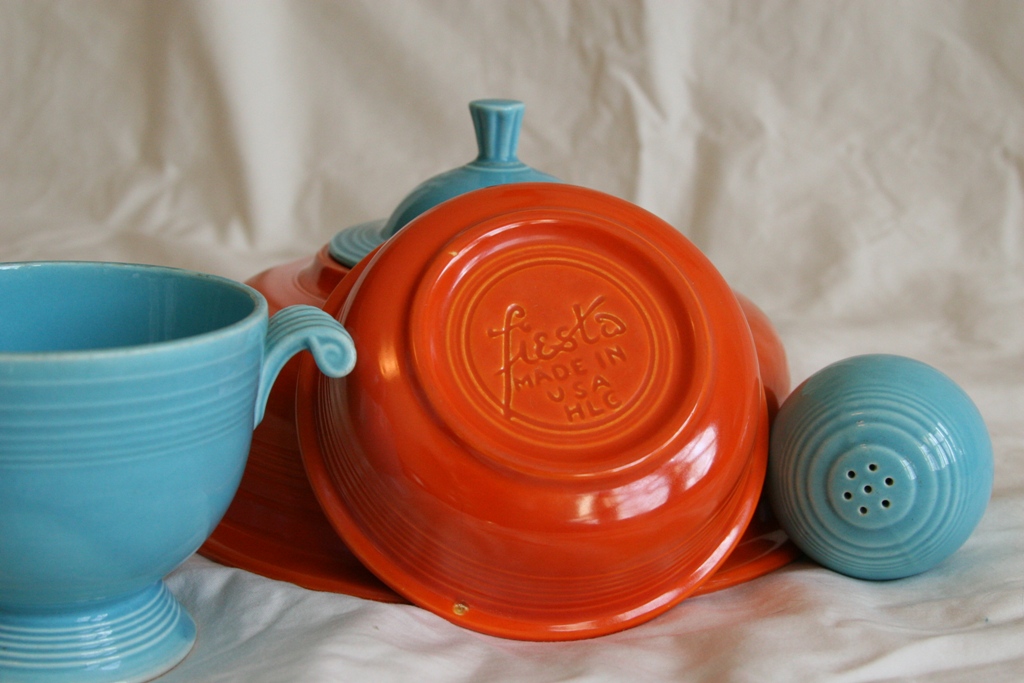
The Complete Guide to Fiesta Ceramics Estate Sale Blog
Definitive Logo Marks of Old Fiestaware. Lowercase "fiesta" stamp: If the mark is an under-glaze stamp and the word "Fiesta" is entirely lowercase letters, the piece is vintage. " There are lots of variants in the markings, but older vintage Fiesta was ink stamped on the bottom in all lower-case letters," says Wilkes.